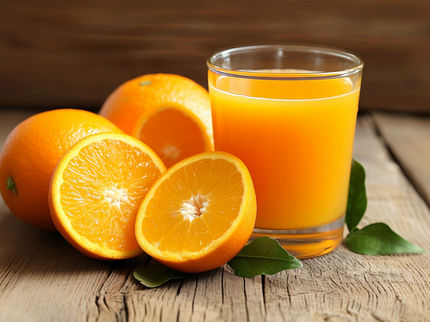Muscaris grapes: Molecular secret of lychee note revealed
New findings form the basis for further studies investigating the extent to which the aroma-relevant compounds are transferred from the grapes into wine
A team of researchers from the Leibniz Institute for Food Systems Biology at the Technical University of Munich has succeeded for the first time in identifying the odorants responsible for the characteristic lychee note of Muscaris grapes. The new findings form the basis for further studies investigating the extent to which the aroma-relevant compounds are transferred from the grapes into wine. At the same time, they provide a scientific basis for the targeted breeding of innovative and resistant grape varieties with distinctly fruity aroma characteristics.
Bred in 1987 by the State Institute of Viticulture Freiburg, Germany, the white Muscaris grape variety combines the excellent fungal resistance of the Solaris variety with the intense aroma of the Gelber Muskateller, also known as Muscat Blanc. The characteristic aroma of Muscaris grapes is characterized by a distinctive, fruity lychee note, which also describes the bouquet of Muscaris wines.
No information on aroma-relevant compounds
Stephanie Frank, co-author and Senior Scientist at the Leibniz Institute, explains: "In the past, several studies had already looked at the composition of must and wine from Muscaris grapes. However, our literature research revealed no information about the odor-active compounds that contribute to the typical grape aroma of the modern variety."
"It was also previously unknown which odorants the Muscaris grape variety inherited from its parent variety, Gelber Muskateller," adds first author Xingjie Wang. "We were particularly interested in the molecular background of the unique lychee note," continues the PhD student from the Leibniz Institute.
Two odorants are crucial
To find out more about the molecular background of the special grape aroma, the Freising researchers carried out extensive investigations. As a comparative aroma extract dilution analysis revealed, Muscaris and Muskateller grapes differ only slightly in the odor-active compounds they contain. Of the 39 and 35 odorants identified, 16 exceeded their odor threshold concentrations.
Further experiments finally showed that the combination of two of the identified odorants is responsible for the distinct lychee note in the aroma of Muscaris grapes. These are the compounds (2S,4R)-rose oxide and geraniol.
"The results of our odorant analyses are groundbreaking for further aroma research on grape varieties such as Muscaris. The freely available study data also opens up new perspectives for the future of viticulture, as fruity wines are becoming increasingly popular," summarizes study leader Martin Steinhaus, who heads the Food Metabolome Chemistry research group at the Leibniz Institute.
Original publication
Other news from the department science
These products might interest you

ISQ 7610 by Thermo Fisher Scientific
Revolutionary GC/MS: Optimized for uninterrupted operation and helium savings
Change columns and sources without interrupting the vacuum and save up to 80 % helium

TSQ 9610 GC-MS/MS by Thermo Fisher Scientific
TSQ 9610 GC-MS/MS for superb sensitivity and selectivity with outstanding reliable productivity
Eliminate unnecessary, unplanned instrument downtime, save helium and maximize productivity

Get the analytics and lab tech industry in your inbox
By submitting this form you agree that LUMITOS AG will send you the newsletter(s) selected above by email. Your data will not be passed on to third parties. Your data will be stored and processed in accordance with our data protection regulations. LUMITOS may contact you by email for the purpose of advertising or market and opinion surveys. You can revoke your consent at any time without giving reasons to LUMITOS AG, Ernst-Augustin-Str. 2, 12489 Berlin, Germany or by e-mail at revoke@lumitos.com with effect for the future. In addition, each email contains a link to unsubscribe from the corresponding newsletter.






















































